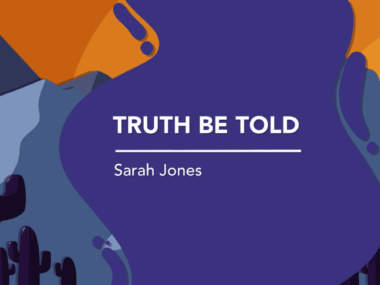Fasenra, Nucala equally effective, safe in EGPA: Real-world study
But higher rate of complete response seen with Fasenra at 1 year
Written by |

Fasenra (benralizumab) and Nucala (mepolizumab) appear to be equally safe and effective in helping adults with eosinophilic granulomatosis with polyangiitis (EGPA) achieve disease remission, according to a real-world study in Europe that directly compared the two approved therapies.
Still, at one year, AstraZeneca’s Fasenra was associated with a significantly higher rate of complete responses — meaning no disease activity in patients — and a deeper reduction in eosinophils, the immune cells that are typically increased in EGPA, a rare type of ANCA-associated vasculitis (AAV).
These data align with findings from the head-to-head Phase 3 MANDARA clinical trial (NCT04157348), which showed that Fasenra was no less effective than GlaxoSmithKline’s Nucala at maintaining EGPA remission. The results of MANDARA supported Fasenra’s regulatory approvals in the U.S. and the European Union.
“This multicenter retrospective European study found an overall comparable efficacy and safety of” the two therapies, the researchers wrote, adding that “this real-life study supports … use [of this type of treatment] in EGPA, highlighting differences for personalized therapy.”
The researchers noted that the dosages used for each therapy were the ones approved for the treatment of severe eosinophilic asthma, another condition marked by high eosinophil counts. The doses, therefore, were lower than those approved for use in people with EGPA.
The study, “Mepolizumab versus benralizumab for eosinophilic granulomatosis with polyangiitis (EGPA): A European real-life retrospective comparative study,” was published in the Journal of Autoimmunity. Six of its authors have consulted or advised for AstraZeneca, and another six for GSK. Altogether, more than 60 scientists were credited as study authors.
Study tests Fasenra vs. Nucala in real world as EGPA treatment
Like other types of AAV, EGPA is marked by inflammation of small blood vessels that can lead to damage in multiple organs. The rare autoimmune disease is characterized by eosinophil-rich granulomas — clusters of immune cells — within these blood vessels.
Patients may develop eosinophilic asthma, another condition marked by high eosinophil counts, with symptoms such as shortness of breath and a runny nose.
Both Nucala and Fasenra are approved in the U.S. as add-on therapies for adults with EGPA, and in the European Union, where it’s indicated for those with relapsing or treatment-resistant disease. While their molecular targets differ, both medications ease inflammation by blocking signaling from IL-5, a molecule that recruits eosinophils to inflamed tissues.
Fasenra was approved mainly based on data from the MANDARA trial, which tested the therapy against Nucala, the sole other approved EGPA therapy. The trial involved 140 adults with relapsing or treatment-resistant EGPA. With its positive results, the trial met its main goal, showing that Fasenra was at least not inferior to Nucala at keeping EGPA in remission.
“However, data matching the two drugs in a real-world setting are lacking,” the researchers wrote.
To compare them, a team of international researchers looked back at the medical records of 176 adults with EGPA, with a median age of 54. The goal was to compare how well the two medications work and how safe each is in a real-world setting. Patients were followed for at least three months after treatment at reference centers across nine European countries.
A total of 88 patients treated with Nucala were matched in terms of sex, age, disease severity, and oral corticosteroid dose, to 88 patients given Fasenra.
Both therapies were given at doses approved for severe eosinophilic asthma, which are lower than those approved for EGPA.
Complete response was defined as achieving no disease activity, reflected by a Birmingham Vasculitis Activity Score (BVAS) of zero and a daily oral corticosteroid dose or prednisone equivalent of up to 4 mg/day. Partial response was defined as a BVAS of zero and a daily oral corticosteroid dose or prednisone equivalent higher than 4 mg/day.
More patients on Fasenra achieved complete response, or no disease activity
The results showed that after three months of treatment, complete or partial responses were achieved by a similar proportion of patients treated with Nucala or Fasenra (45.4% vs. 51.1%).
The number of patients achieving a complete response increased over time with both medications. However, after one year, the complete response rate was significantly higher in the Fasenra group than among those on Nucala (48.1% vs. 32.4%).
After achieving complete response, five Nucala-treated patients and four Fasenra-treated patients relapsed, the data showed.
Throughout the study, there were no significant group differences in terms of reductions in disease activity, as assessed with the BVAS, or in daily oral corticosteroid dose. Lung function improvements were also similar between the groups throughout the study.
While both medications effectively reduced the number of eosinophils, Fasenra consistently resulted in a greater reduction at all evaluated time points, the researchers noted.
These findings show a comparable therapeutic effectiveness on [body-wide] and respiratory manifestations, [oral corticosteroid] tapering effect and safety profile of [Nucala] and [Fasenra] in patients with EGPA. … However, [Fasenra] achieved a higher [complete response] rate at [one year].
In terms of safety, there were no significant group differences in the proportions of patients who discontinued treatment — 10% with Nucala and 18% with Fasenra — and who reported adverse events, as done by 12.5% on Nucala and 18% on Fasnra.
“These findings show a comparable therapeutic effectiveness on systemic [body-wide] and respiratory manifestations, [oral corticosteroid] tapering effect and safety profile of [Nucala] and [Fasenra] in patients with EGPA,” the researchers wrote. “However, [Fasenra] achieved a higher [complete response] rate at [one year], and a deeper … eosinophil reduction.”
Importantly, because patients were given lower doses of the two therapies, “it is not possible to exclude whether using the approved doses for EGPA could yield different results,” the researchers wrote.







